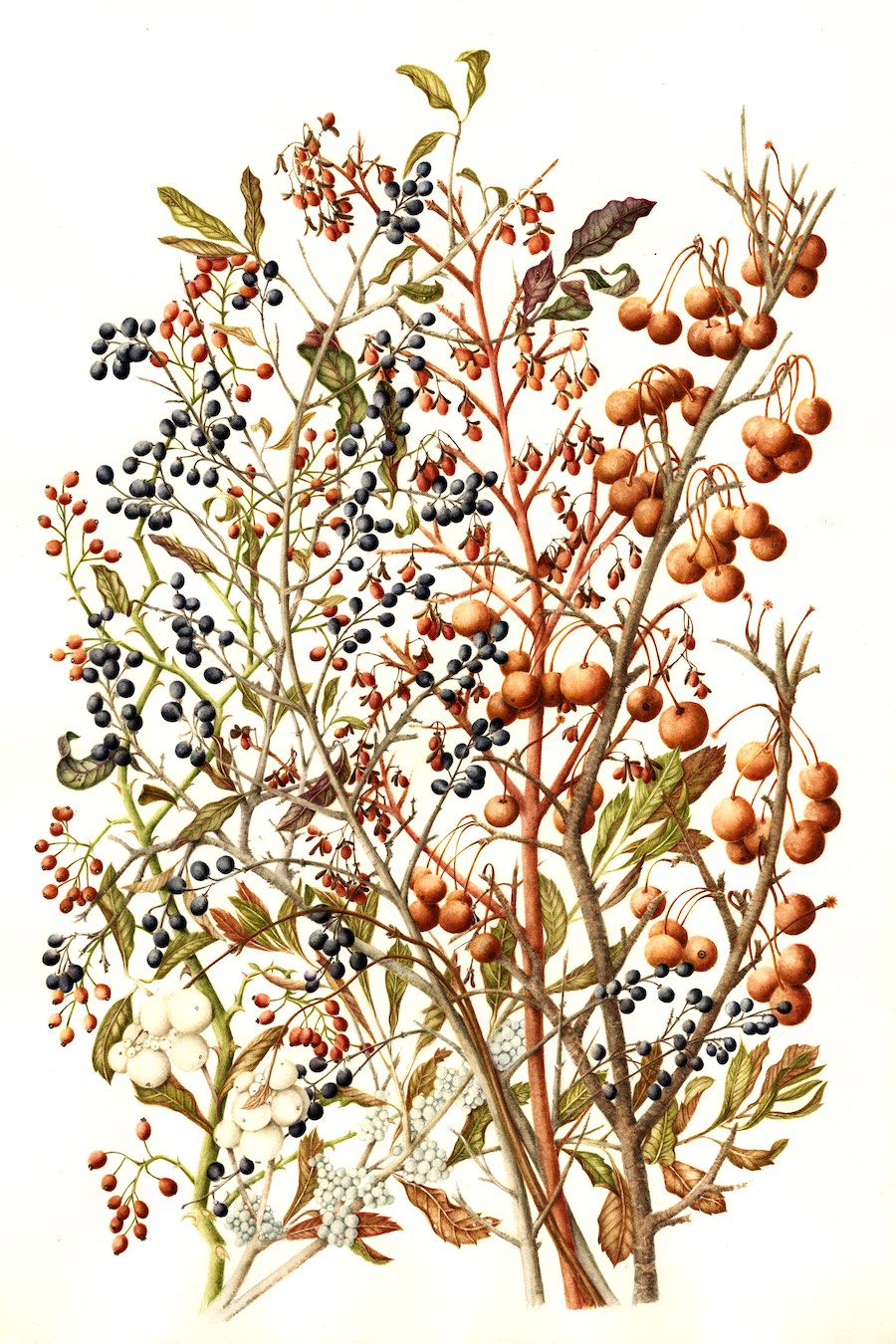
Multiflora rose (Rosa multiflora), Amur privet (Ligustrum obtusifolium) and Siberian crabapple (Malus baccata)
2018

Multiflora rose (Rosa multiflora), Amur privet (Ligustrum obtusifolium) and Siberian crabapple (Malus baccata)
2018
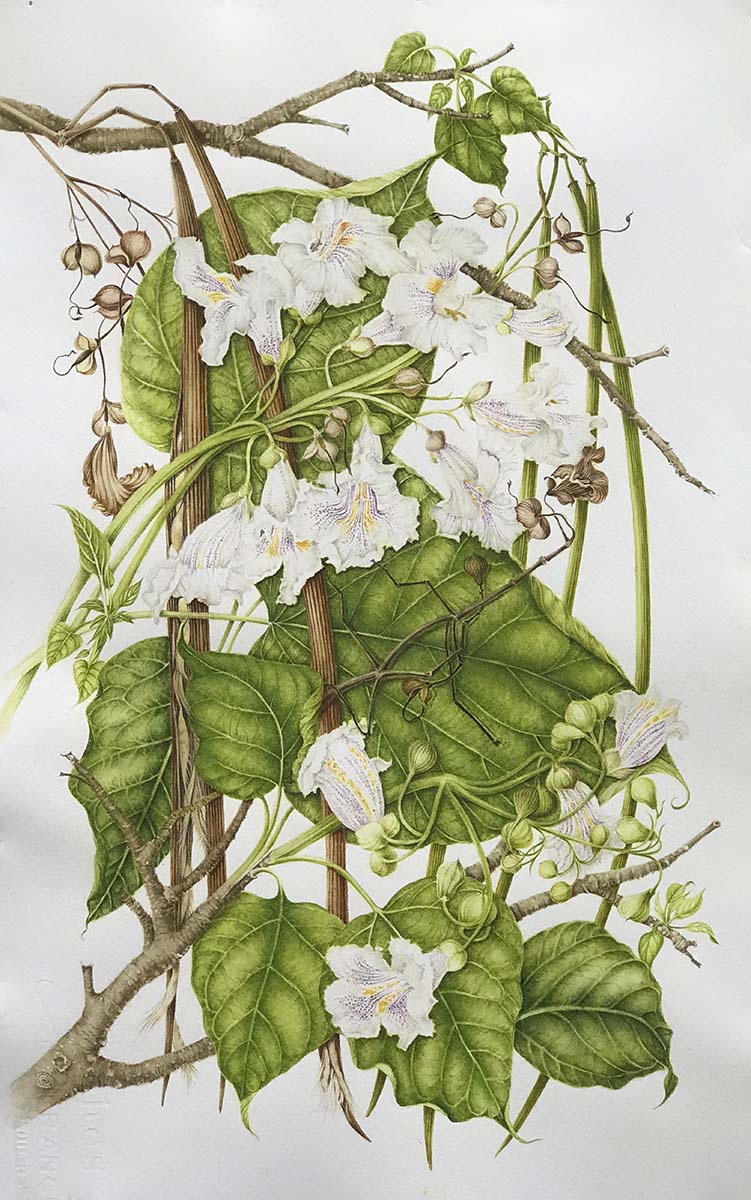
Cigar tree
11″ x 17″, 2018
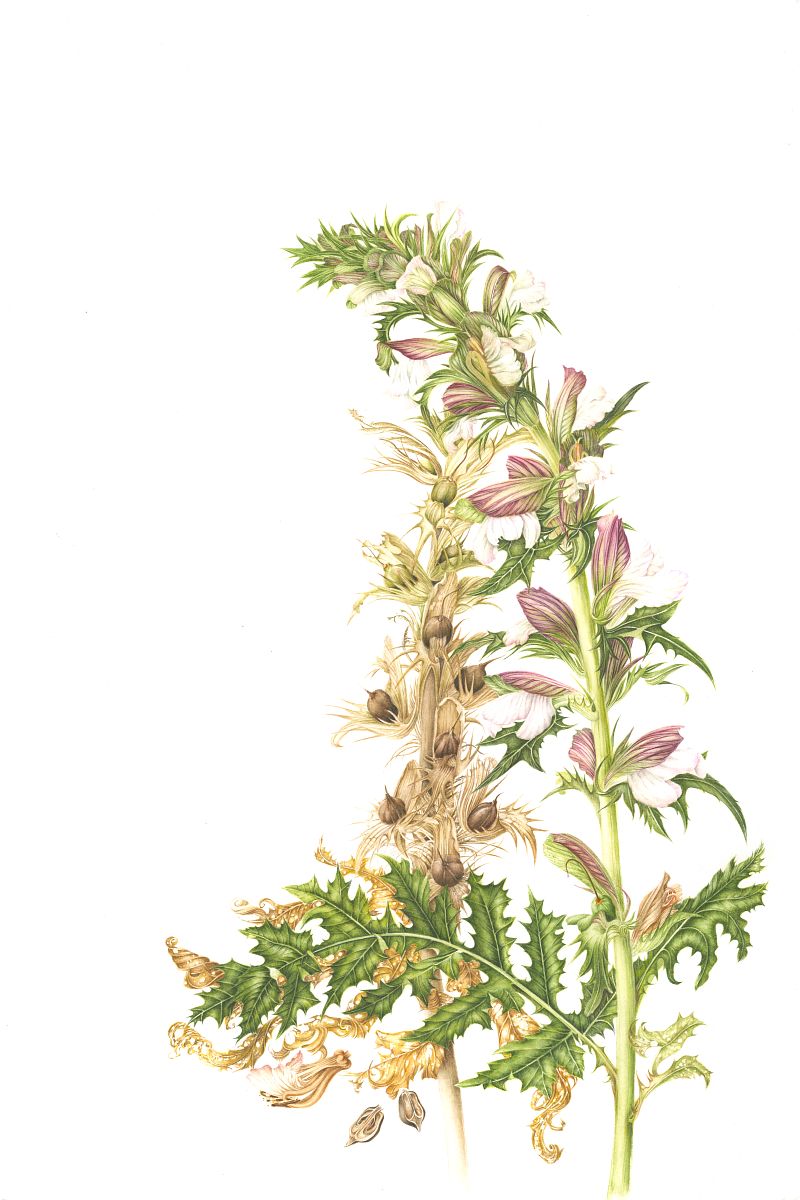
Bear’s breeches
19″ x 13″, 2017
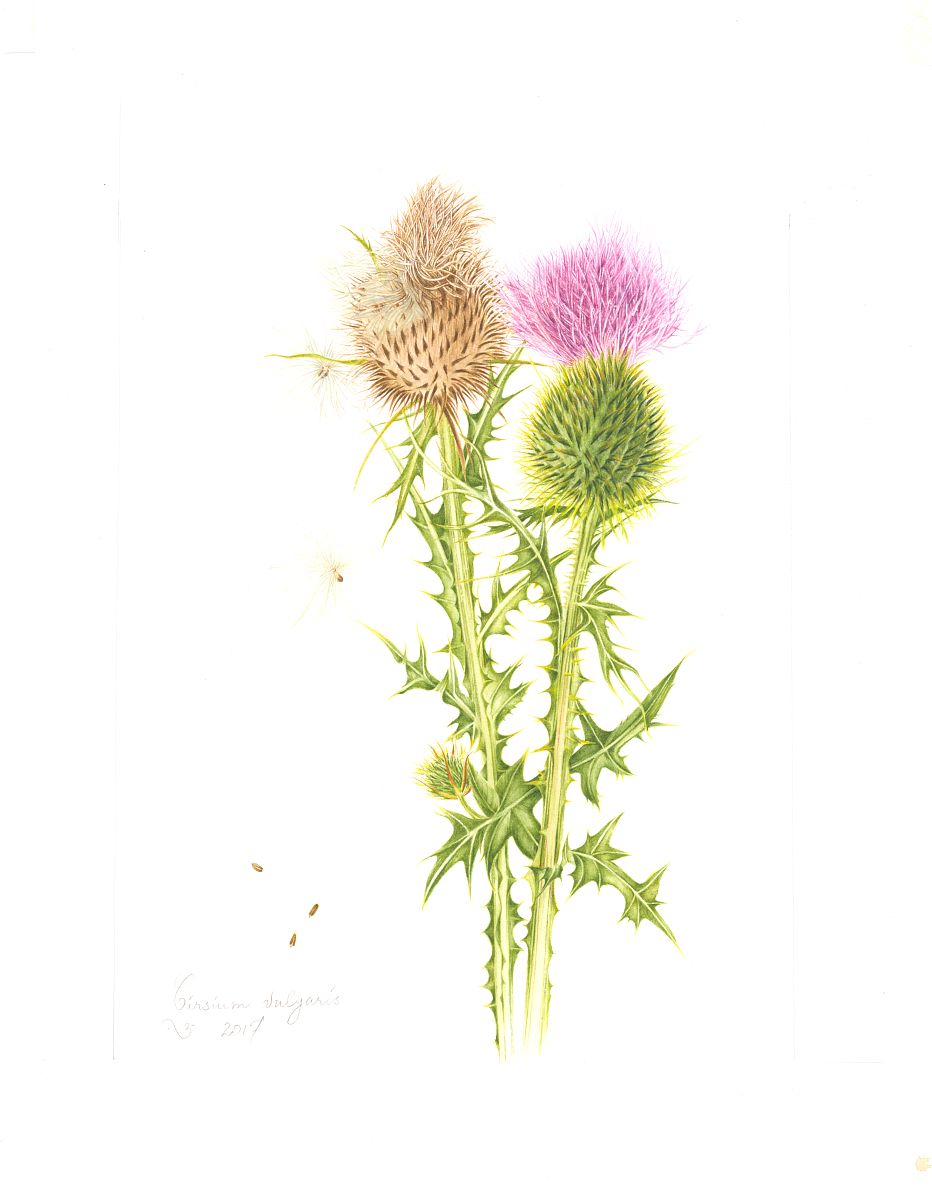
Thistle
8″ x 11″, 2017
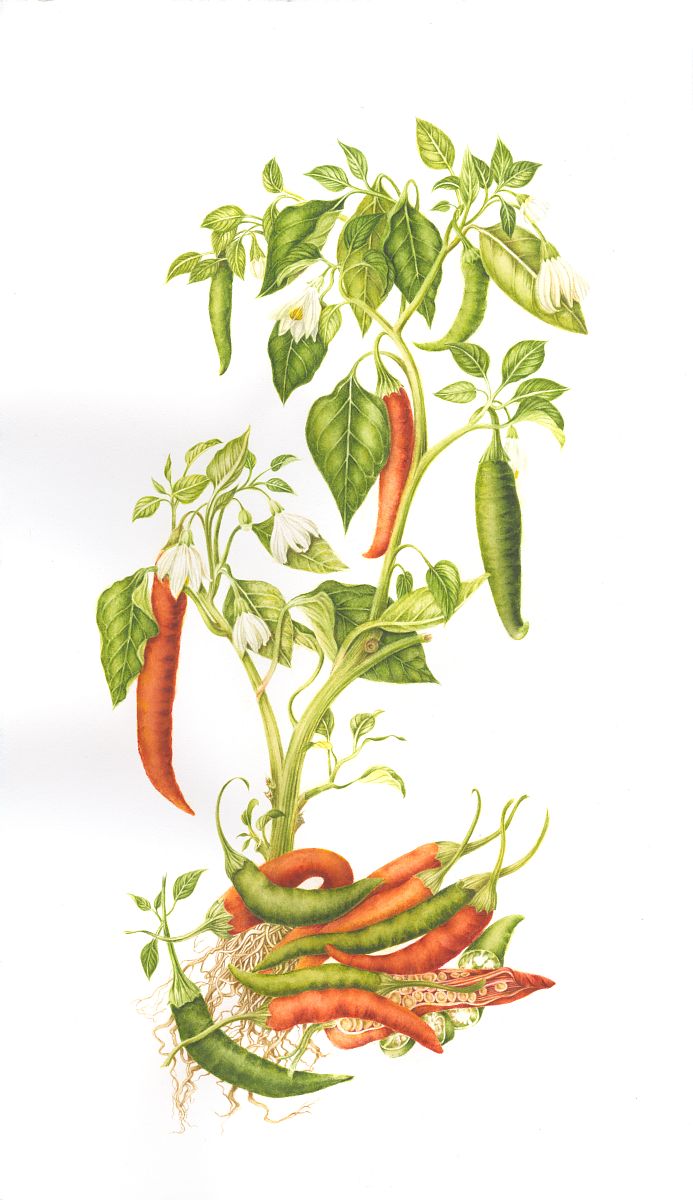
Cayenne pepper
7″ x 14″, 2018
The mention of chilies instantly conjures up an aroma of spicy, piquant food from Asia to Mexico and North Africa. For millennia Asian cuisine was spiced with ingredients such as ginger, assorted radish, cloves, cardamom, nutmeg, mace and cinnamon and black peppercorns, but with no trace of chilies whatsoever. A 180° longitude west, in Mesoamerica and parts of South America, the chili plant had been cultivated for over 5,000 years. So how did this remarkable ingredient become such a vital ingredient in the diet of people half-way across the planet?

Peppers
6″ x 8″, 2017
Read milly’s essay about Capsicum annuum
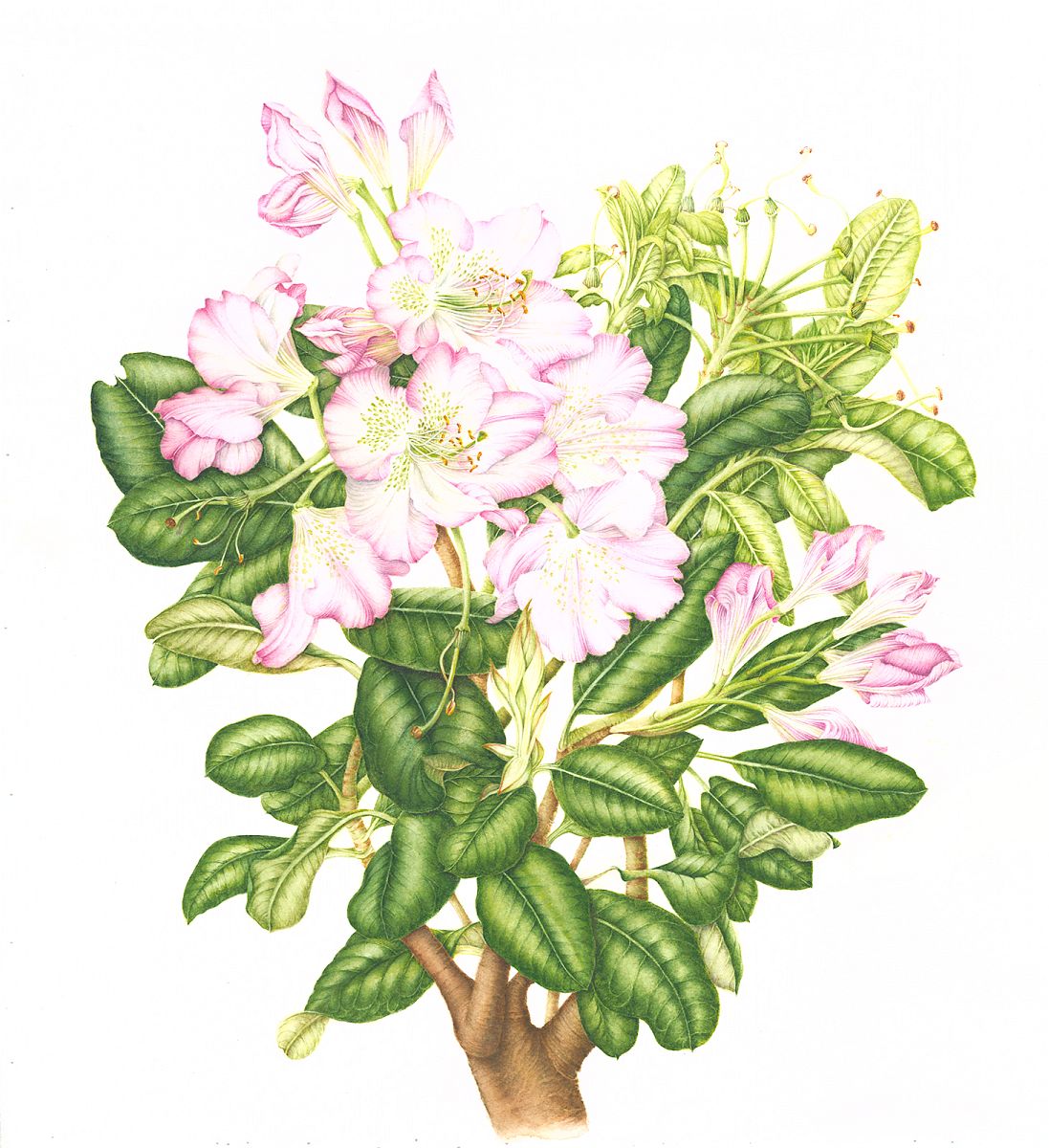
15″ x 18″, 2017
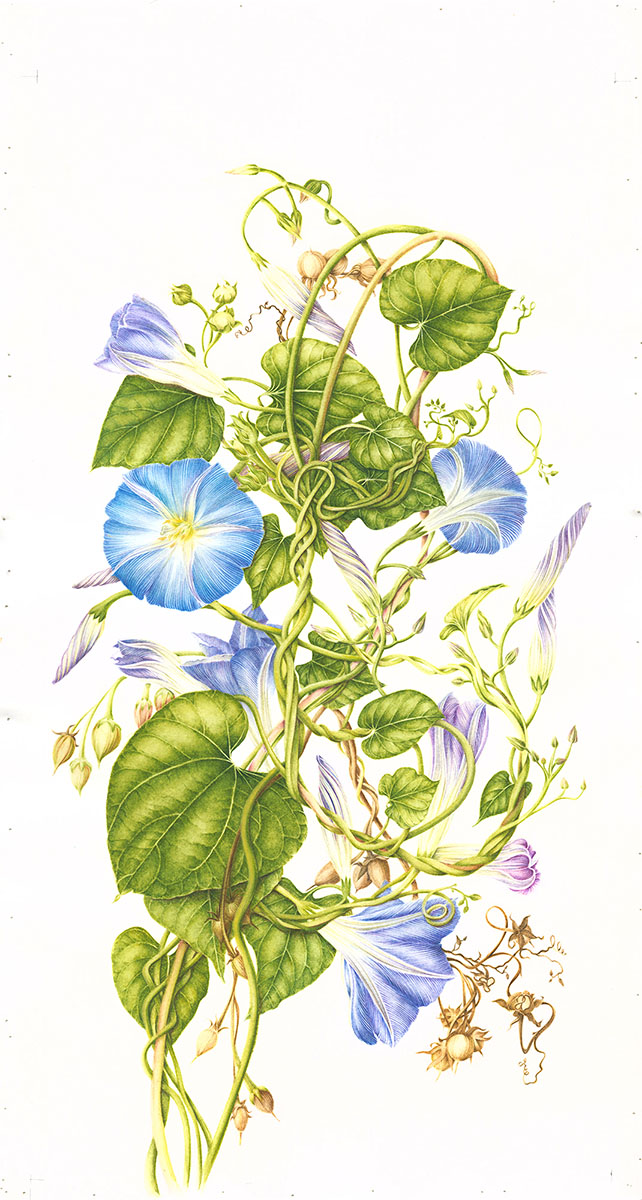
Morning glory
20″ x 11″, 2016
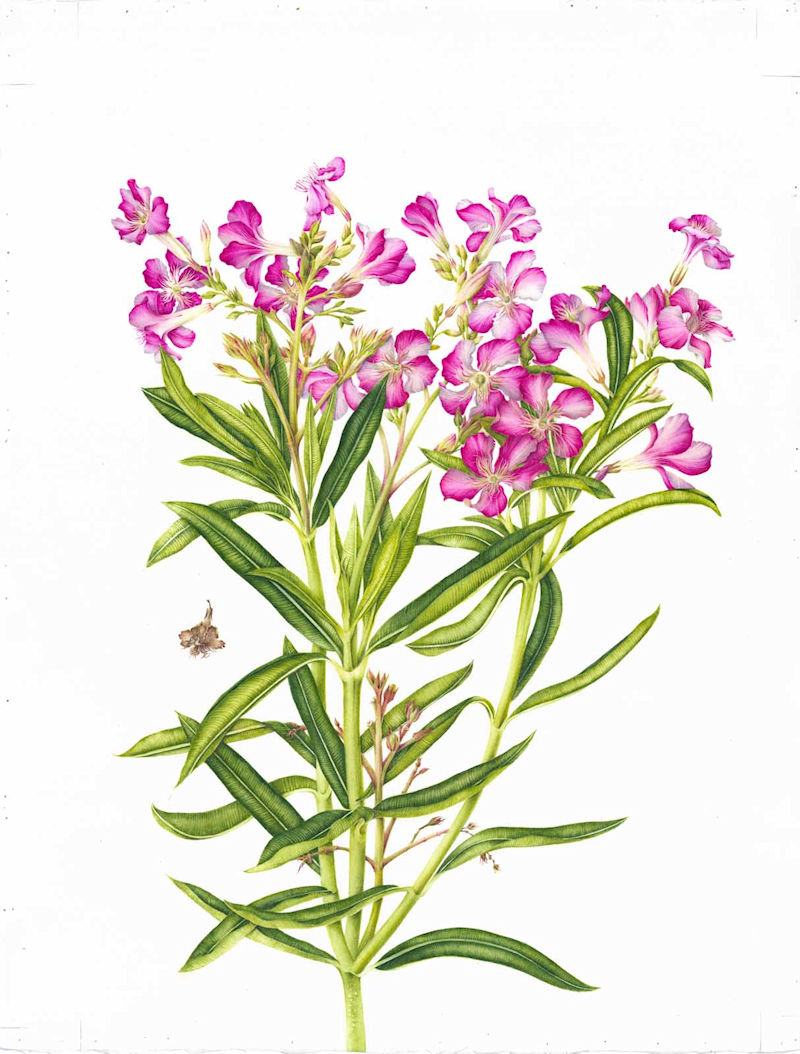
Oleander
20″ x 14″, 2015
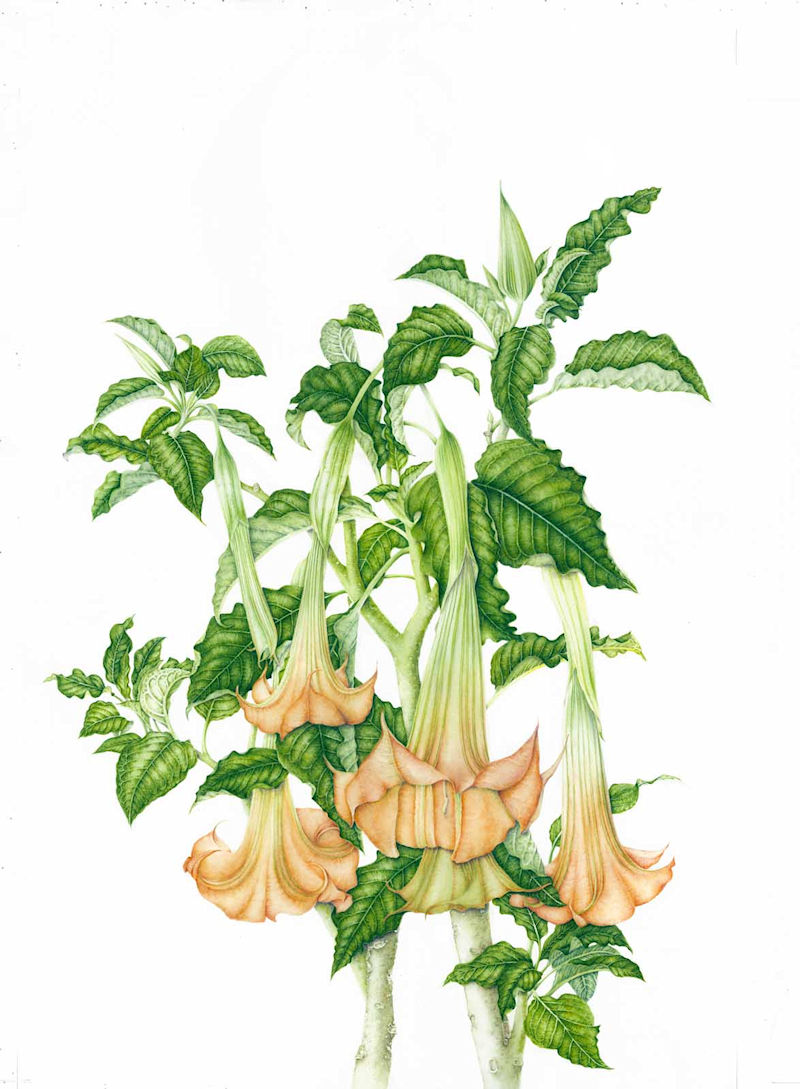
Angel’s trumpet
19″ x 27″, 2015
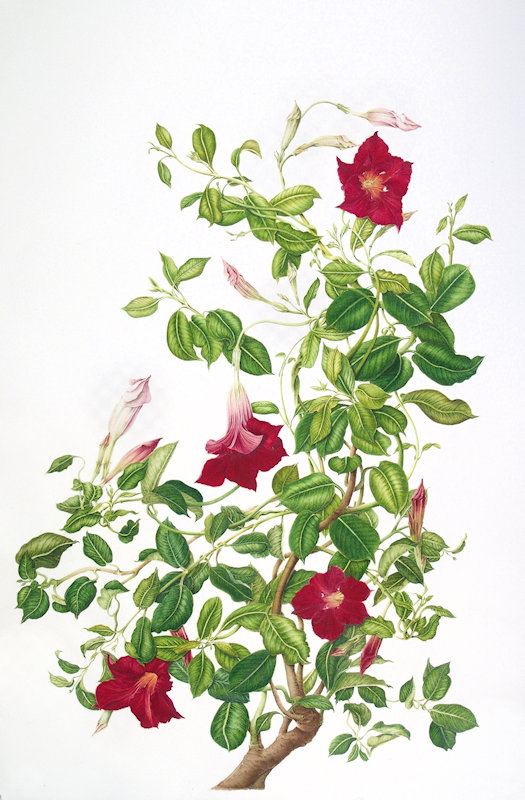
2015
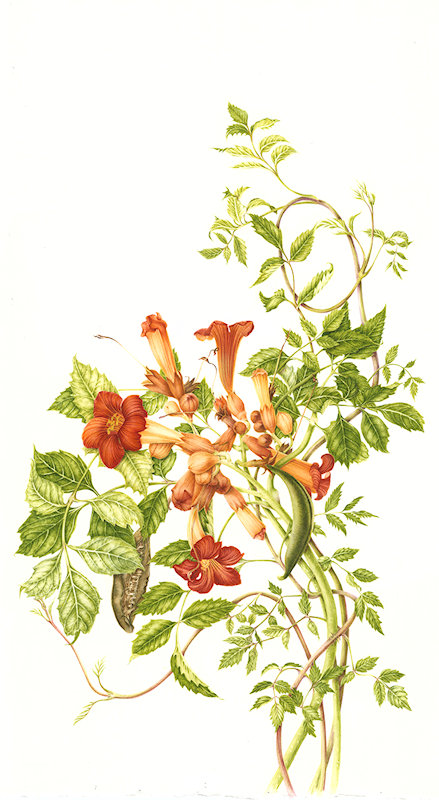
Trumpet vine
18″ x 26″, 2015
Prints available
The genus derives its name from the Greek ‘kampsis’ meaning flexure, curve or bending, referring to the curved stamens of the flower; the latin ‘radicans’ (rooting) refers to its aerial rootlets.
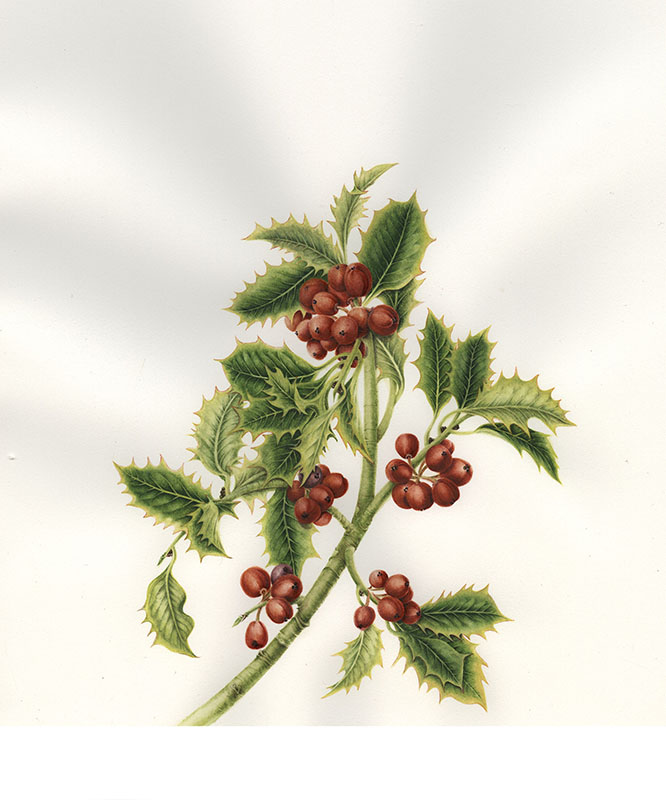
Holly
2015

SOLD
2010
Prints available

SOLD
Prints available
The plant takes its name from digitus, the Latin word for finger and was so called long before official Linnean nomenclature was the practice. The common English name, foxglove, may have originated from folk’s (woodland folk or faeries) glove. The elongated bell-shaped flowers so easily fit the tip of a finger that their resemblance to a glove or a thimble is unmistakable. In Germany, the plant was called fingerhut or thimble; in Ireland Dead Man’s Thimbles; in Norwegian, Revbielde, meaning “Foxbell,” the only specific reference to fox.
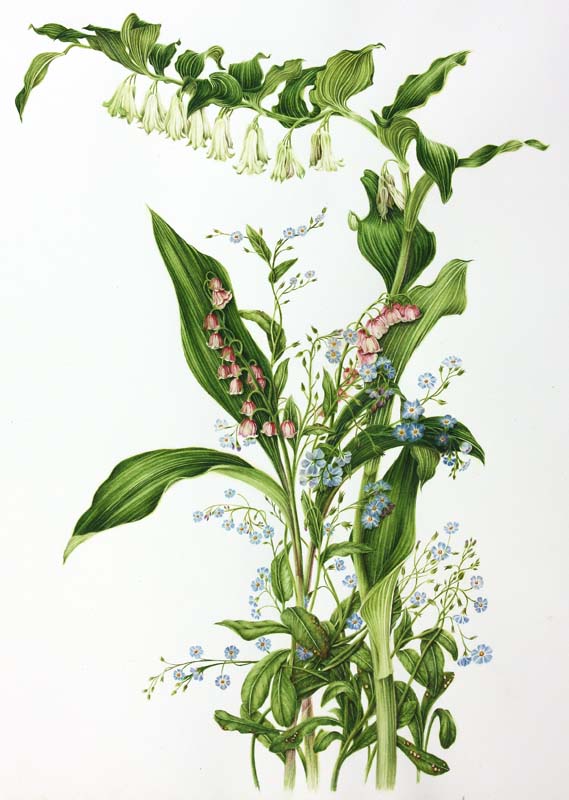
Convallaria majalis var. rosea (Pink Lily-of-the-Valley)
Myosotis scorpioides
Polygonatum commutatum
Prints available
From the Latin convallis for valley—a favored habitat for the plant—and majalis or belonging to May, this fragrant spring bloom derives its botanical name. Its other names are May Lily, Ladder-to-Heaven, Our Lady’s Tears but most popular of all is the lily-of-the-valley. Its flowers are usually white, although pale to darker pinks are less common but also popular.
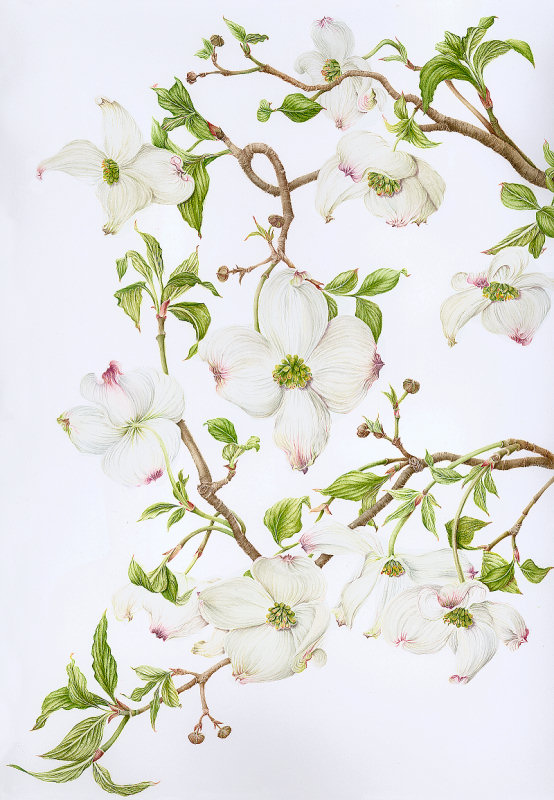
2008
Its name derives from the Latin corneus, meaning horn, for its hard, strong and shock resistant wood; and florida for its floral abundance early in the spring.
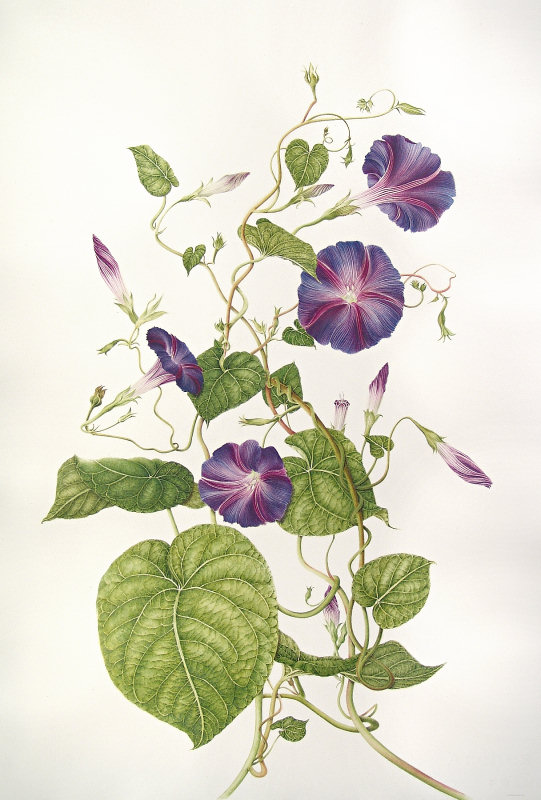
Morning Glory
SOLD
Prints available
Because the flowers open at night or in diffuse light and last only a single day, saluting the sun, the name is well-deserved—though quite a contrast to “worm-like”!
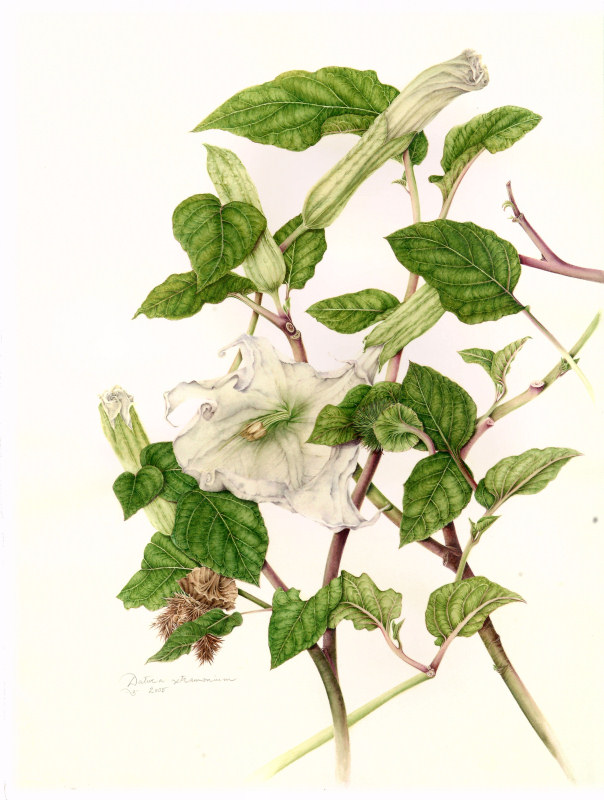
2008
The genus name is from the Sanskrit dhatt?rah (plant, thorn apple) and stramonium is originally from Greek, strychnos for “nightshade” and maniakos for “mad”. It is also known as Devil’s Apple, Apple of Peru, Stinkweed, Jamestown-weed. Jimson-weed, Devil’s Trumpet & moonflower. Little wonder that Susan spent days researching the correct identity of her daunting spiny seedpod, before confirming it as D. stramonium.
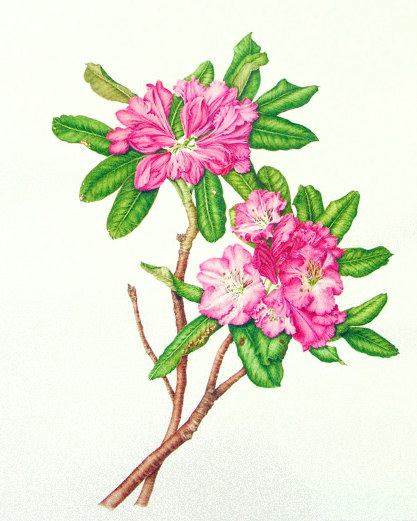
SOLD
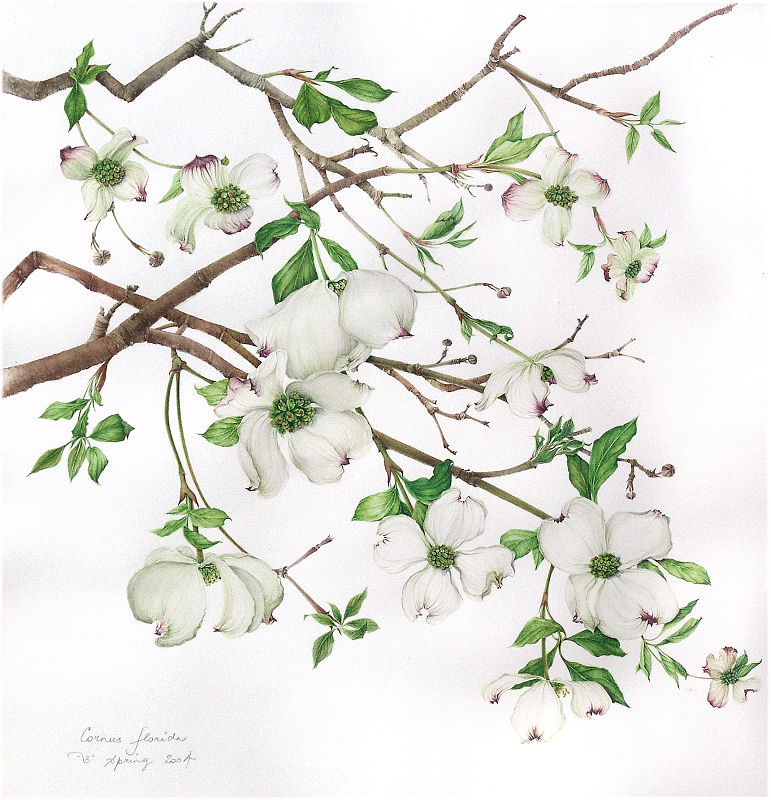
Dogwood
SOLD
2004
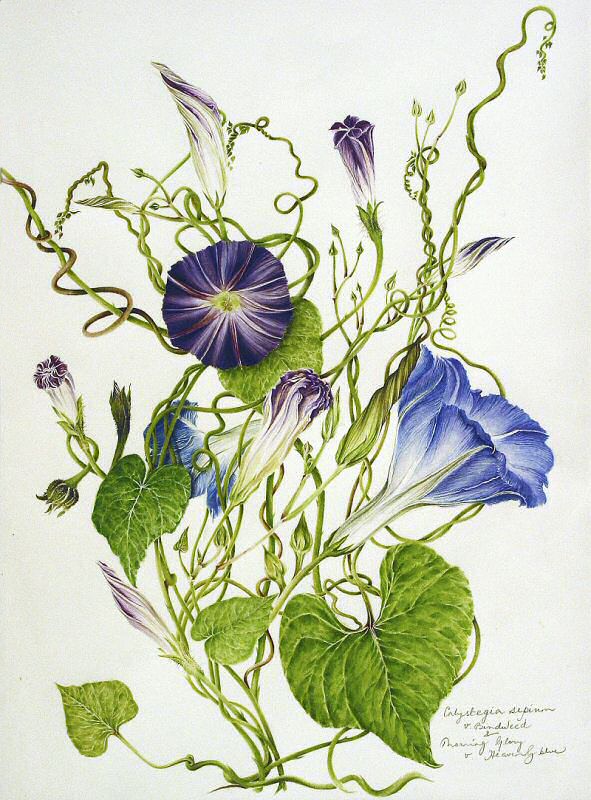
SOLD
Ips is the Greek word for worms. Ipomoea, or worm-like, describes the twining growth bait of this genus. However, it has undergone many name changes in its history. Starting off as Pharbitis purpurea incarnate, then Convolvulus major, followed by Convolvulus pupurea, it was only in the 20th century that the Morning Glory earned its current name. Because the flowers open at night or in diffuse light and last only a single day, saluting the sun, the name is well-deserved — though quite a contrast to ‘worm-like’!
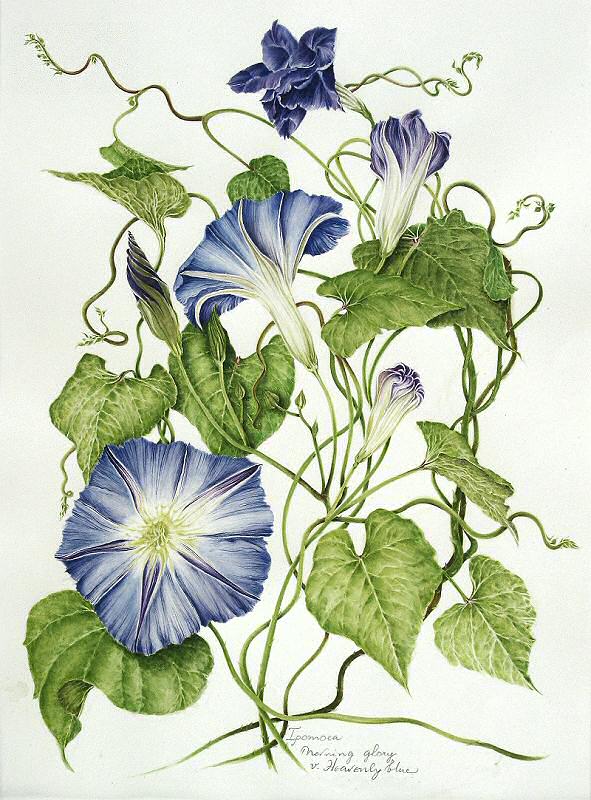
Heavenly Blue morning glory